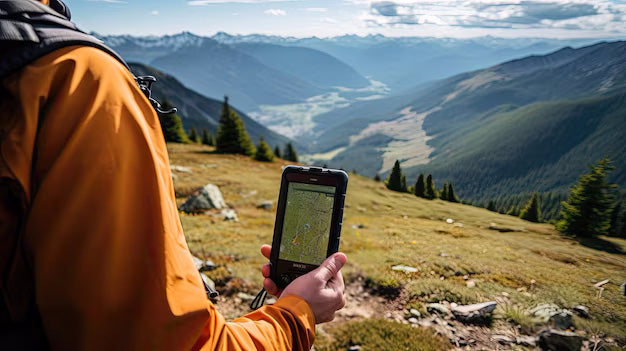In a survival scenario, getting lost isn’t just inconvenient—it can be deadly. Navigation is the eighth pillar of preparedness because it ensures you can move with purpose, avoid danger zones, and reach safety when it matters most. Whether you're hiking deep into the wilderness, bugging out during a crisis, or navigating without GPS due to grid failure, knowing where you are and where you're going is critical.
Why Navigation Matters
In the modern world, we rely heavily on smartphones and GPS for navigation. But in an emergency, those systems may be unavailable. Grid-down situations, natural disasters, or poor signal areas can make digital navigation tools useless. Having the right analog tools—and the skills to use them—could mean the difference between finding shelter or wandering into danger.
Key Navigation Tools & Skills
- Topographic Maps: In a grid-down, off-grid, or no-signal scenario, digital tools are useless. That’s why paper maps are a critical backup for any preparedness plan. Always carry detailed, waterproof topographic maps of your region and surrounding areas. Keep them stored in a protective case or dry bag, and learn to read them accurately before you need to rely on them.
- Compass: A high-quality baseplate or lensatic compass is an essential tool for orienting yourself. Knowing how to take a bearing, follow a heading, and triangulate your location on a map are core survival navigation skills.
- GPS Devices: While you shouldn’t rely solely on them, handheld GPS units or GPS-enabled radios can still play a major role in everyday and off-grid travel. Ensure they're waterproof, rugged, and powered by rechargeable batteries or solar panels.
- Natural Navigation Methods: Learn to navigate using the sun, moon, stars, and terrain. For example, the North Star can guide you at night, and moss tends to grow on the north side of trees in the northern hemisphere. These techniques serve as a last resort when tools fail.
- Route Planning: Know your primary and alternate routes ahead of time. Whether you're evacuating a city or navigating backcountry trails, plan your escape routes and mark hazards or resources on your maps.
- Landmark Recognition: Practice using terrain features like ridges, valleys, water sources, and tree lines to help you maintain a sense of direction. In dense environments like forests or urban areas, landmark navigation can be life-saving.
- Dead Reckoning & Pace Count: For advanced navigation, especially when visibility is poor, understanding how to calculate your location based on speed, time, and direction helps fill gaps between landmarks.
Preparedness Tips
- Practice Often: Regularly practice with your map and compass. Test your navigation skills on hikes, during training exercises, or when scouting bug-out routes.
- Waterproof Your Tools: Keep maps and compasses dry using waterproof pouches or containers. Laminate maps or store them in Ziploc bags for added protection.
- Mark Key Locations: On your physical maps, mark important locations like water sources, shelters, danger zones, and rally points.
- Include Navigation Tools in Every Kit: Every bug-out bag, get-home bag, and vehicle kit should include at least one compass and a map of the area you’ll be in.
Navigation + Communication
Navigation and communication often go hand-in-hand in survival. For instance, relaying coordinates via radio, or meeting a group at a pre-marked location, requires both solid navigation and radio skills. Consider combining your study of navigation with Pillar 7: Communications to be fully prepared in field scenarios.
Gear Recommendations
- Silva or Suunto Compass: Trusted brands for reliable, field-ready compasses.
- Waterproof Topographic Maps: Get maps specific to your region and laminate them or store in map cases.
- Garmin GPS Units: Rugged, portable, and solar-compatible options are ideal.
- Map Protractors & Rulers: Useful for accurate grid plotting and navigation training.
- Dry Bags or Map Cases: Protect paper navigation tools in all weather conditions.
Conclusion
Navigation isn’t just about having a compass—it’s about knowing how to think clearly, plan strategically, and act confidently when you're off-grid or in unfamiliar terrain. Build up your map-reading skills, test your ability to orient yourself without digital aids, and make sure your gear supports your survival goals.
At Mountain Ready, we carry a full range of navigation tools—compasses, waterproof maps, GPS units, and survival training guides—to help you stay on course when it matters most. Because in a true survival scenario, knowing where you're going can be just as important as having food or fire.


